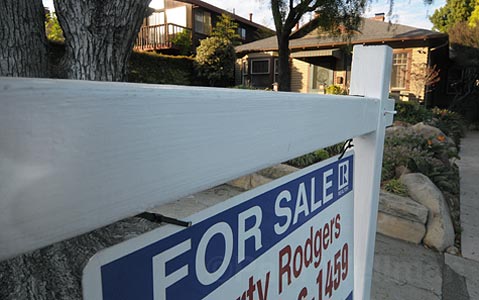Case of the Incredible Shrinking City
Santa Barbara's Population Drops

Probably for the first time since the great drought of the 1860s, the City of Santa Barbara’s population actually fell over the past 10 years, by 1,190 people. To the extent the city’s slow-growth agenda factored into this exodus, it was only indirectly. “It’s the recession,” said Brian Bresolin, chief number cruncher for the Santa Barbara County Association of Governments. “People lost their jobs and left.”
Others attribute the shift to Santa Barbara’s high cost of housing. According to initial data in from the 2010 Census, Carpinteria lost nearly as many people as Santa Barbara did. But as a percentage of the whole, Carpinteria’s loss was much more dramatic, 8.1 percent as opposed to 1.3. Also losing bodies was Montecito, Mission Canyon, Santa Ynez, and Solvang. By contrast, Santa Maria grew by 25 percent, Buellton by 26 percent, and Lompoc by 3.2 percent. Countywide, Santa Barbara grew by 6.1 percent, giving it a total population of 423,000.
The other major development to emerge from the scads of census info is the high number of vacant properties that exist throughout the county. Countywide, 10,730 housing units are vacant, up from 6,279 ten years before. The City of Santa Barbara reported an increase in its vacancy rate of 61 percent, the largest of the county’s seven cities. “We’ve been hearing for a while how soft the rental market has been,” said Bresolin, “but we’ve never seen numbers like this before.” It remains unclear, he said, what kind of housing has seen the greatest increase in vacancies, rentals, or gone up for sale. Bresolin said that even in Santa Maria, where the population growth has been dramatic, the number of vacancies is also quite high. Santa Maria, he said, was hit especially hard by the wave of home foreclosures that accompanied the banking crisis and the fall of the real estate markets.
In Santa Barbara, these numbers will be fodder for the ongoing debate about the extent to which the City Council needs to relax zoning restrictions to allow for the development of more tightly packed housing on the grounds that it’s cheaper. Councilmember Michael Self, in particular, has argued that the rental housing market is sufficiently soft to accommodate the demand. Increased densities, she’s argued, would destroy the city’s character and are not justified by the numbers. Affordable housing advocates, who support increased densities, counter that the census results reflect conditions at the bottom of the recession, and that zoning rules need to be altered to better accommodate working families.
Data reflecting the income spread and housing density of Santa Barbara’s residents have yet to be released. But the initial figures clearly show the percentage of Hispanics living in Santa Barbara has grown. Countywide, the Hispanic population has increased from 34 percent to 43 percent. Much of that growth has taken place in the north. In Santa Maria for example, Hispanics now make up 70 percent of the city’s population, up from 59 percent 10 years ago. By contrast, in the City of Santa Barbara, the increase was less dramatic, jumping from 35 percent to 38.
Census numbers are important because they’re the basis by which the federal government apportions government funds to various jurisdictions. They’re also the basis for the new boundary lines that define the new political maps. How those lines are drawn has huge implications on the outcome of elections 10 years into the future. In this regard, there’s been considerable speculation about the new boundary lines for the new 23rd Congressional District, represented currently by Democrat Lois Capps who famously — or infamously — occupies one of the safest seats in the United States, let alone California. Regardless of how those lines are drawn, Capps will still represent UCSB and Isla Vista, always a treasure trove of liberal Democratic votes in presidential elections. The I.V. population grew by 2,000 in the last 10 years, bringing it to 23,096.
During the past 10 years, Bresolin noted, about 4,000 people died annually and about 6,000 were born.



